Larks & Deserts, birding the southern Namibian Biomes & Deserts
Larks & Deserts, birding the southern Namibian Biomes & Deserts; Individual Ornithology & Nature Photography Tour in Southern Namibia
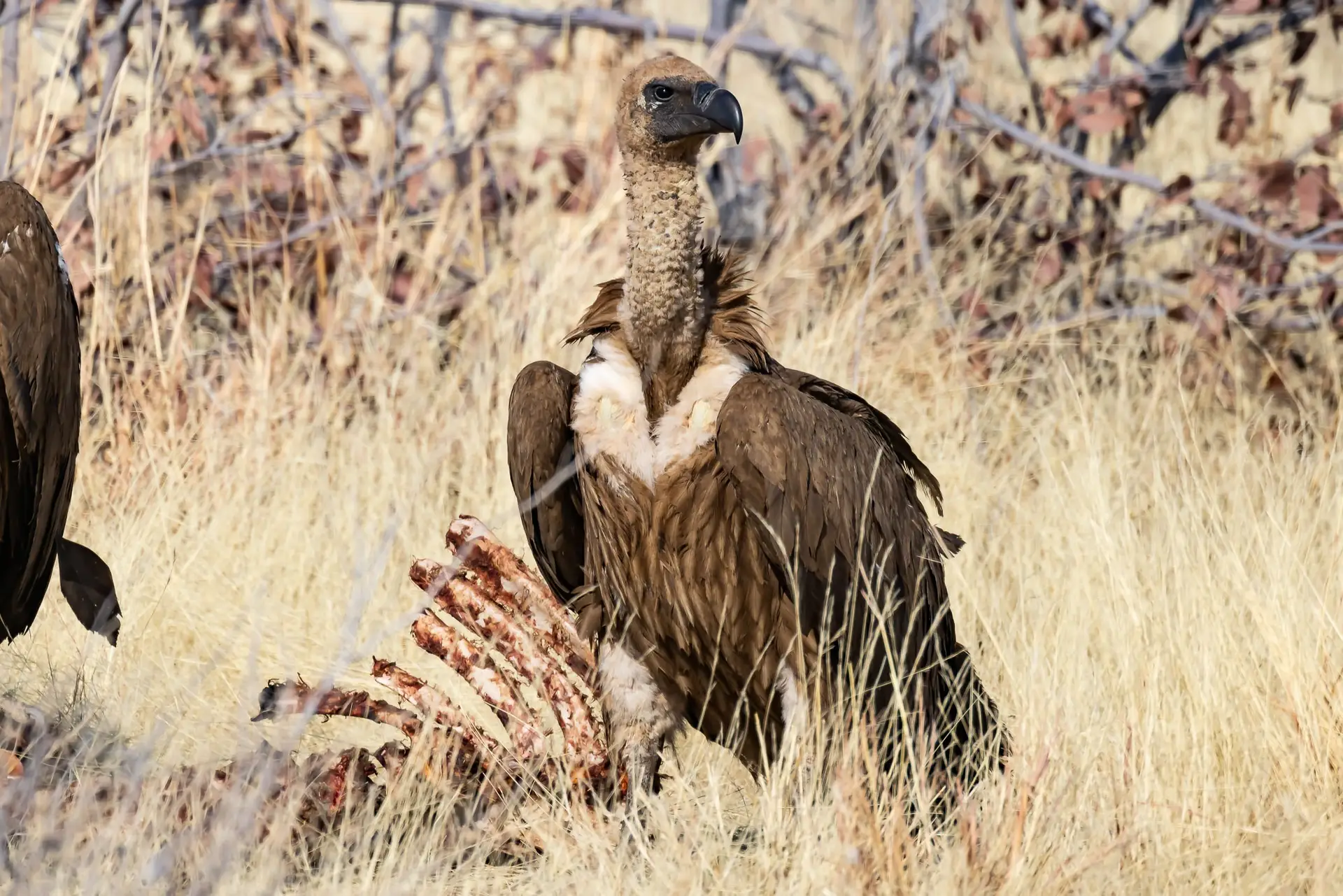

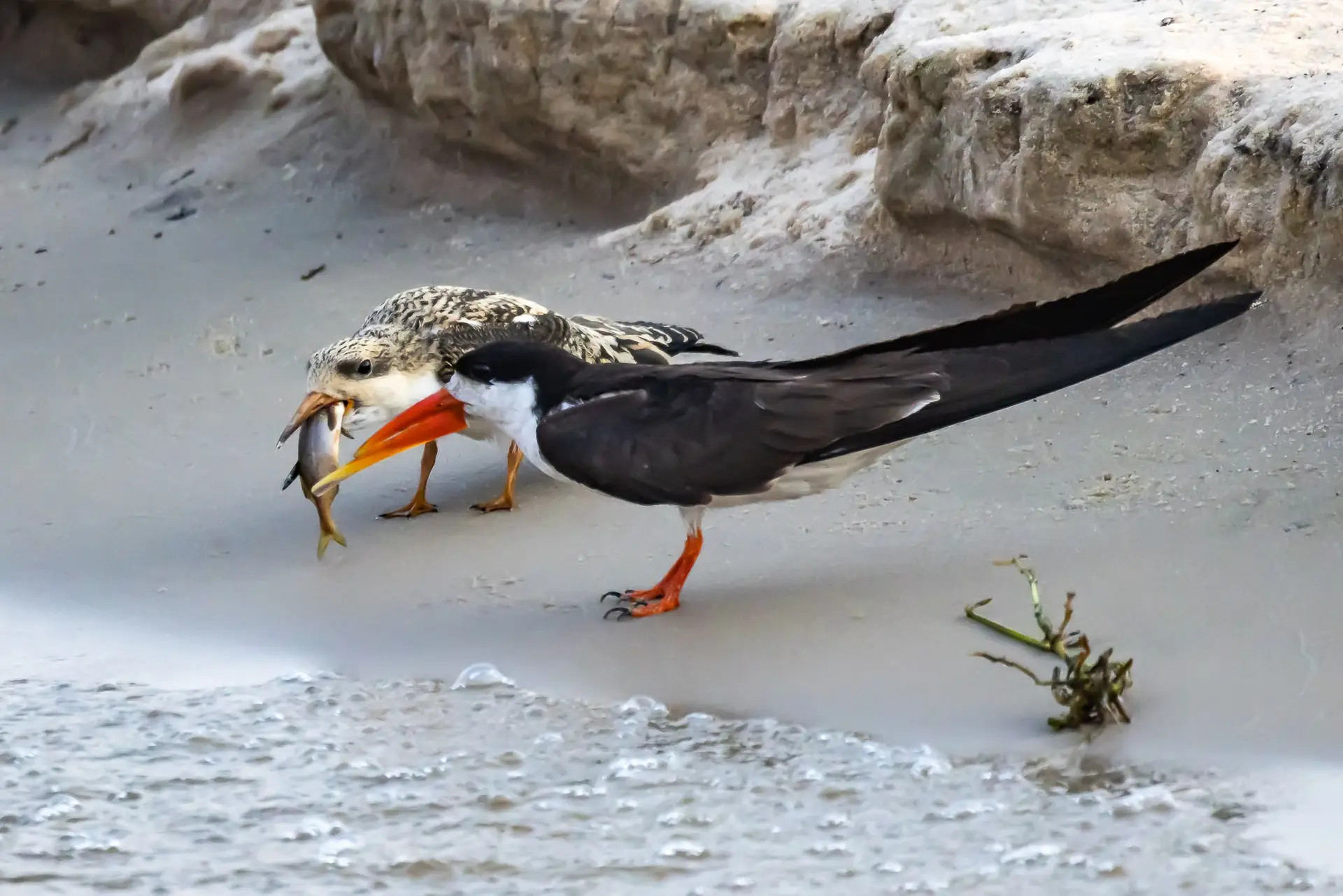

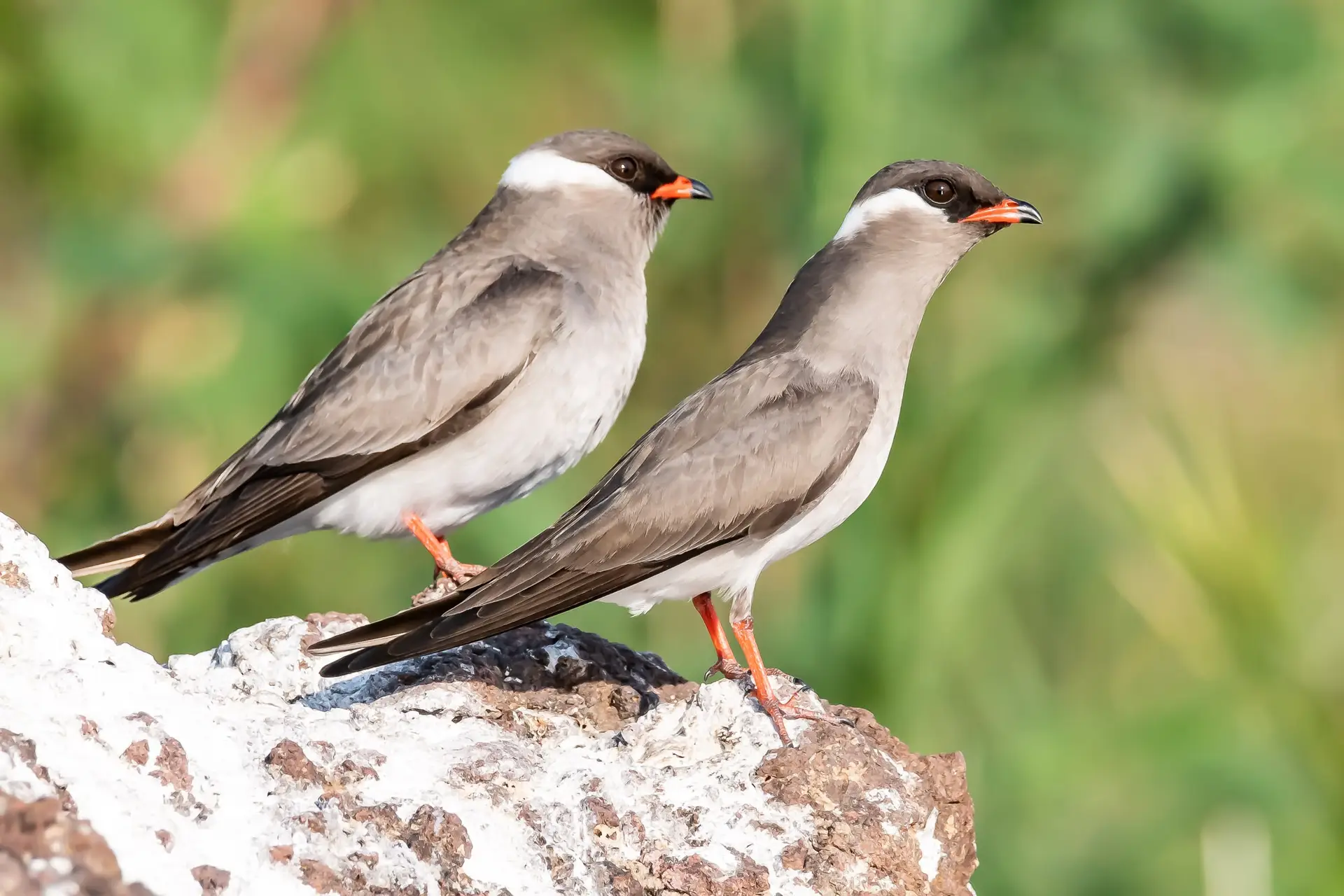
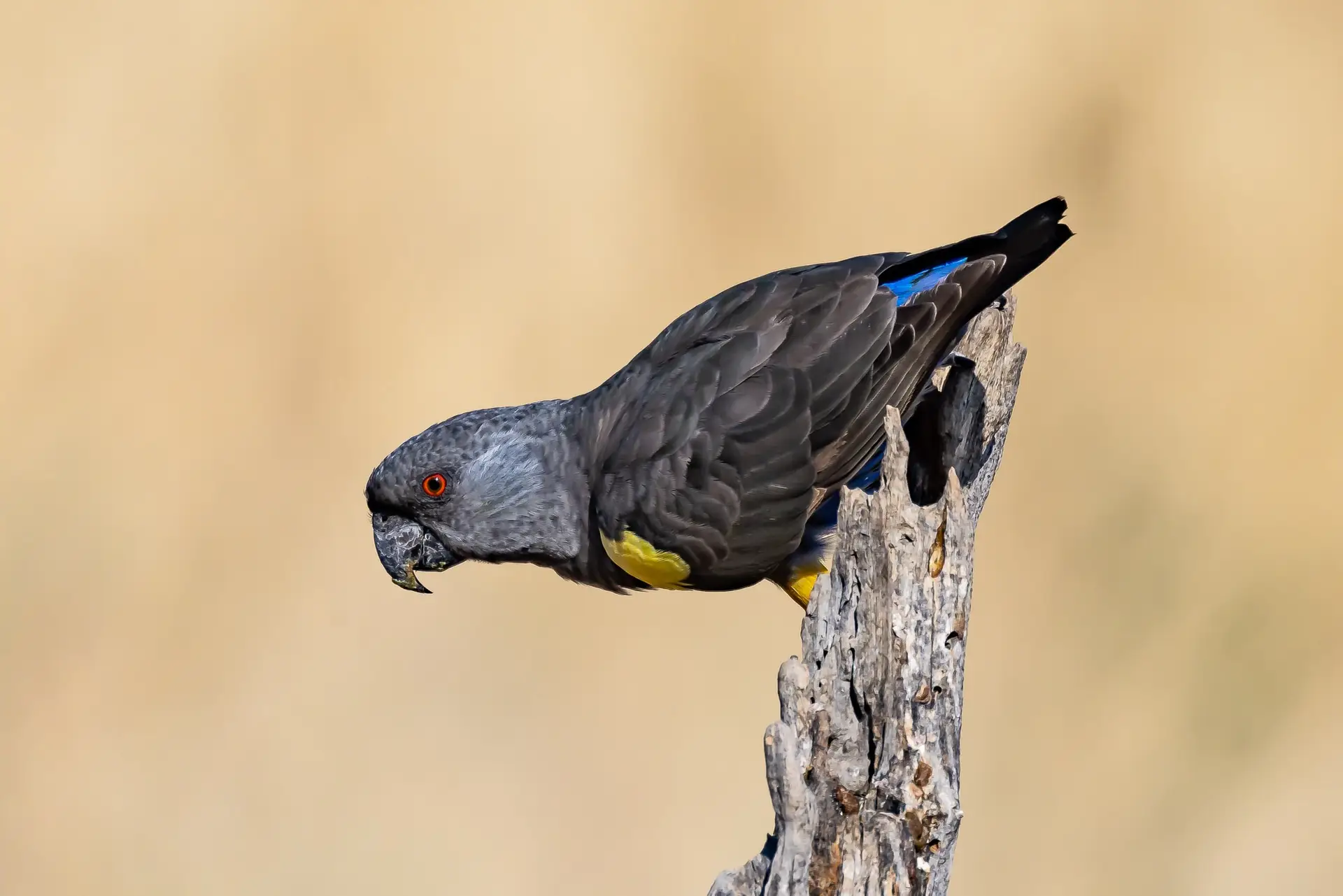



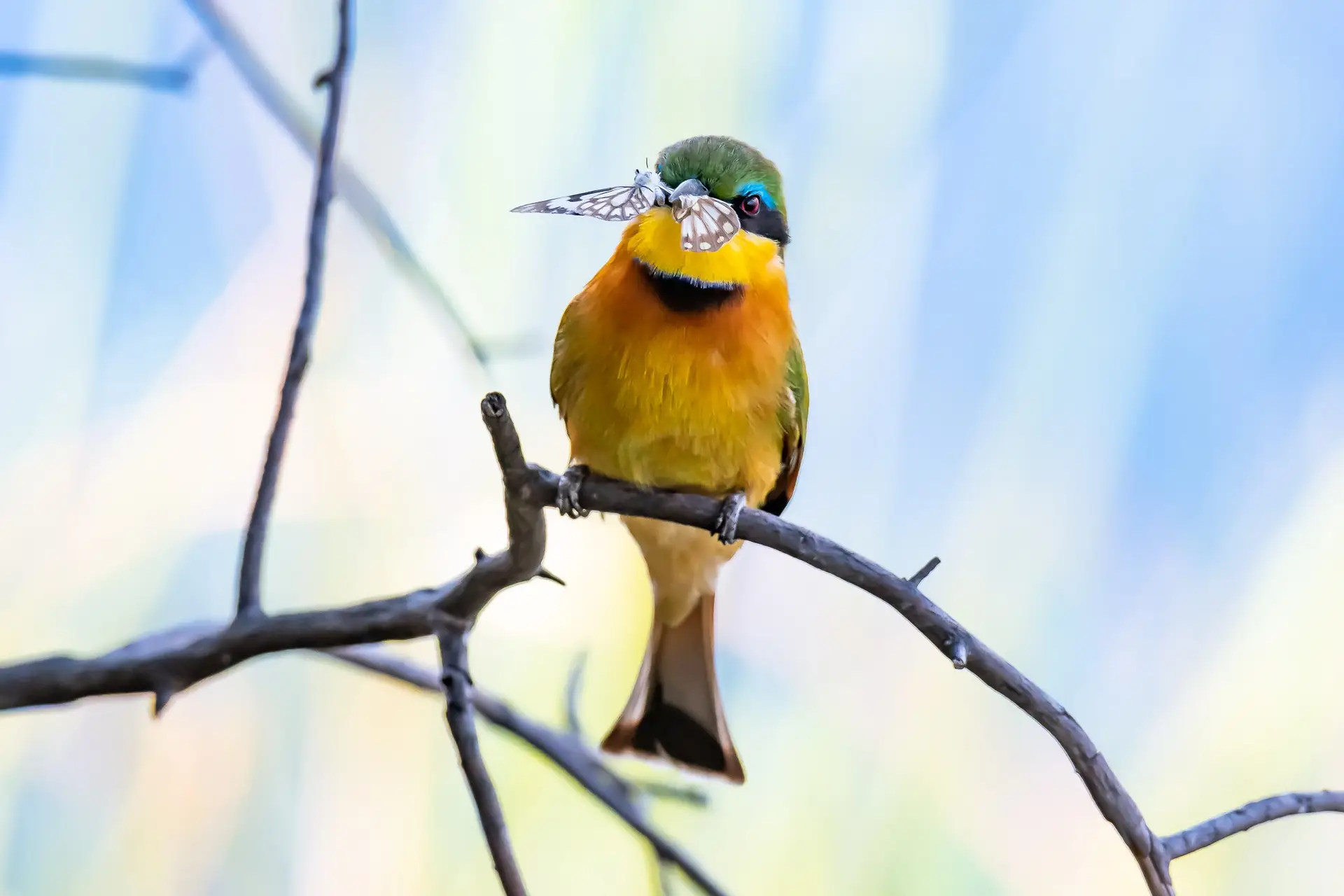



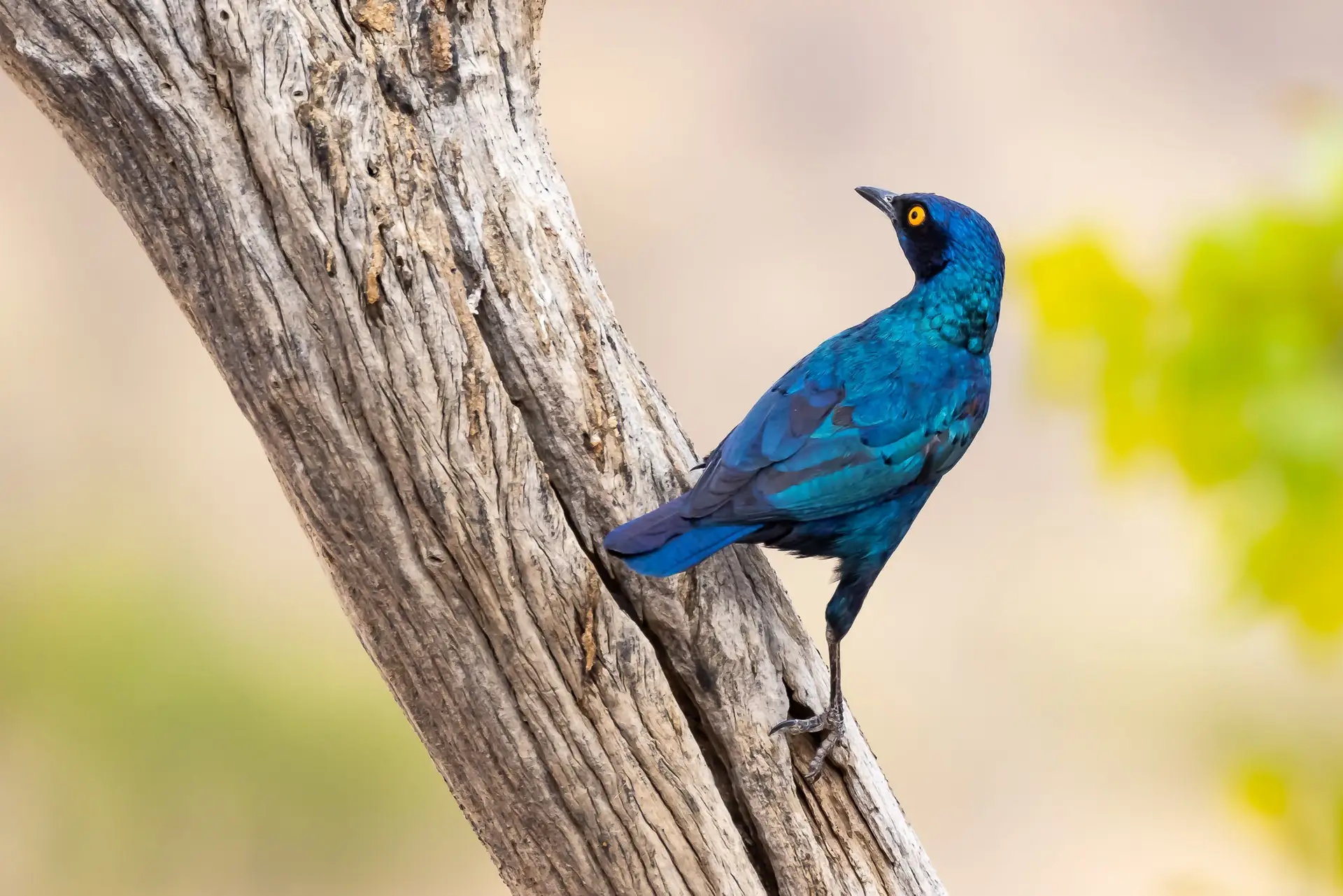

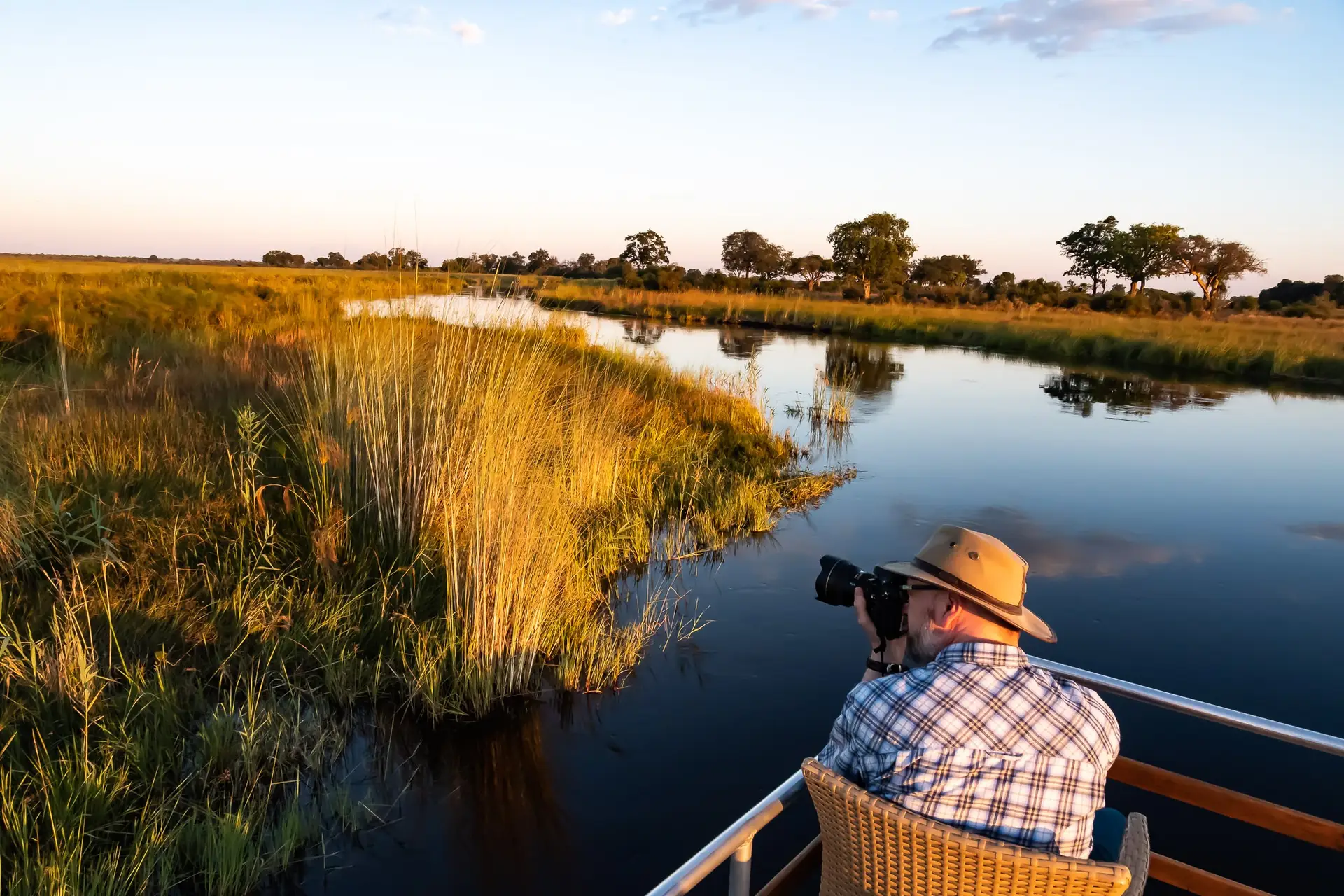

This trip combines ornithology and photography seamlessly as we actively seek out birds, patiently linger in wildlife hotspots, and share a mutual appreciation for nature, resulting in excellent photo opportunities. Our expert guides from Leaflove Safaris are the ideal leaders for this journey, ensuring a rich experience filled with diverse animals and birds, and ample chances for observation and photography. We’ve carefully designed the itinerary to maximize the variety and quantity of wildlife encounters.
From the arid Mopane savannah to the lush palm oasis of Kunene, the open grassy steppes of the pans to the dense dry forests in the eastern part of Etosha National Park, and the water-rich Manketti forests to the mudflats, rivers, and lagoons of Caprivi, Namibia’s diverse habitats offer a unique array of animals and plants. This incredible variety sets Namibia apart from other African countries. By embarking on this journey, you’ll have the opportunity to fulfill your expectations and build a rich list of sightings.
All accommodations on this trip provide the essential comfort of upper-middle-class standards, featuring “en suite” bathrooms. Furthermore, their strategic locations are chosen to enhance your wildlife viewing experience and optimize route planning for the extensive driving distances in Namibia.
This is a truly untouched nature experience, allowing wildlife to follow the daily rhythm of Africa. Here, you can anticipate encounters with the endemic Hartmann’s mountain zebra, numerous antelope, and graceful giraffes. While sightings of lions, leopards, cheetahs, and elephants are a matter of luck (and some expertise), the opportunity to observe them in their natural habitat is a thrilling possibility.
Our focus in this area centers on its remarkable birdlife. Keep an eye out for the Bare-cheeked Babblers, Little Sparrowhawk, and African Scops Owlets, which are frequently spotted in the garden. During the midday break, you can watch Rüppell’s parrots as they visit the waterhole, and capture moments of Carp’s Black Tit singing in the surrounding Mopane trees.
As we explore the southern gorges, we’ll be on the lookout for Kunene and Hartlaub Francolins. On our night drives, the chance to spot Bronze-winged Coursers and various Nightjars arises at certain times of the year, making for a captivating nocturnal adventure.
Our journey takes us to the north-western border river of Namibia, the Kunene, in search of the rare Cinderella Waxbill and the elusive Cave Chat. Along the way, we’ll traverse a picturesque landscape graced by the meandering palm groves of the Kunene River, offering a unique habitat for bird species that are exclusive to this region.
Here, we have the opportunity to spot fascinating birds such as the Rufous-tailed Palm Thrush, the Red-necked Spurfowl (ssp. afer), and with a stroke of luck, the elusive Grey Kestrel. Keep an eye out for the African Harrier Hawk and other bushveld birds that make this area their home.
Additionally, for those interested, we can make a brief stop at a Himba village, providing valuable insights into the culture and lifestyle of these pastoral people.
Our Land Cruisers, specially converted for game viewing, have wide window seats and the sunroof opens at the watering holes. So you can comfortably take pictures sitting down or standing up.
Our journey through Ovamboland takes us past indigenous villages nestled in the “oshanas” (flood plains) of the north. As we traverse this region, keep an eye out for Mosque Swallows among the majestic baobab trees, and you might even spot some Angolan Swallows.
Continuing our drive, we arrive at Andoni Plains, an excellent hideaway for Pink-billed and Eastern Clapper Larks. At the artesian fountain, you can observe a variety of wetland waders and water-related birds, including the graceful Whiskered Tern.
Etosha National Park, often referred to as the “Great White Place,” spans over 22,000 square kilometers and ranks among Africa’s most wildlife-rich parks. While the thrill of spotting a lion by the roadside or encountering a herd of elephants is undeniable, it’s essential to recognize that Etosha’s landscape is harsh, and its wildlife faces challenging conditions.
In this unique environment, keep an eye out for the Etosha Agama and the elegant Blue Crane, as well as the remarkable Termite mounds that serve as territorial markers for Rufous-naped Larks. Amidst dense vegetation, you may also spot the diminutive Damara Dik Dik Antelopes.
Etosha’s diverse habitats, including grasslands, dry forests, floodplains, and dense acacia scrub, contribute to its extensive biodiversity. This diversity ensures that you’ll encounter not only a wide array of species but also a multitude of different birds and animals within this national park.
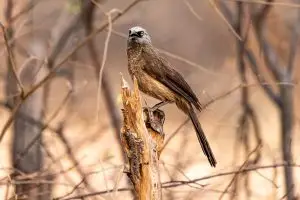

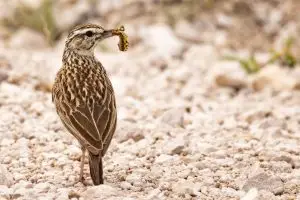
This additional program is exclusively available for booking and becomes truly rewarding when the Naye Naye pans are filled with water. In favorable rainy years, these pans undergo a brief but remarkable transformation, hosting a temporary explosion of life that attracts thousands of diverse bird species.
During the last bird count, participants also enjoyed significant elephant sightings, and a thrilling moment unfolded when wild dogs seized a warthog right in front of the birdwatchers. This program is a must if there has been substantial rainfall, typically from March to July, when the pans come alive with wildlife activity.
Our specially equipped vehicles are designed with photographers in mind, featuring a lever roof and high-suspension for optimal visibility and comfort. With four-wheel drive capabilities, we navigate the challenging terrain of this wilderness, ensuring that our journey is akin to a constant expedition, offering you the best opportunities to capture stunning photographs.
Our journey continues eastward, leading us to Tsumkwe, the capital of Bushmanland. Over the next few days, our focus is on exploring the various pans within this natural and untouched wilderness, capturing hundreds of photographs of diverse water birds set against the backdrop of a captivating dry forest.
An exciting opportunity awaits as we also have the chance to visit the Bushmen, who are welcoming and open to being photographed by guests. The landscape is adorned with magnificent baobab trees, and if luck is on our side, we might spot the elusive leopard orchid in bloom.
While the elephant population in this area tends to be elusive, a stroke of luck could lead us to encounter wild dogs as we search for snipes. The journey promises a unique blend of natural beauty, wildlife, and cultural experiences.
Our visit takes us to Mahango National Park, and despite its relatively modest size, this park boasts a wealth of wildlife. Here, you can expect to encounter the rare sable and roan antelopes, along with giraffes, elephants, lechwe, waterbuck, and reedbuck, all congregating along the banks of the Okavango River.
In the lodge’s garden, keep an eye out for the Amethyst sunbird, Brown-, Jameson’s-, and Red-billed Firefinches, White-browed Robin-Chat, and Meyer’s Parrots.
We’ll embark on flatboat excursions to explore further, seeking out the African Skimmer, Open-billed Stork, Rufous-bellied Heron, Green-backed Heron, Black-crowned Night Heron, and numerous other new bird species. With a stroke of luck, we might even spot sought-after species like the Slaty Egret and White-backed Night-Heron. And don’t forget the majestic Pel’s Fishing Owl, which has been sighted in this area!
Our sightings have also included the exquisite Narina Trogon, making our journey through Mahango National Park a truly remarkable and rewarding experience.
The Kwando/Linyanti/Liambezi alluvial river basin boasts wide reed belts, numerous lagoons, and expansive floodplains along the river’s course, making it a gathering place for a diverse array of wildlife.
These waters are teeming with hippos, crocodiles, and Nile monitors. On the riverbanks, a robust population of various antelope species, striking Chapman zebras, buffalo, and countless elephants come to quench their thirst. What adds to the allure of this wilderness are the regular sightings of pythons and an increasing number of leopard encounters.
During our exploration, we hope to spot the Racket-tailed Roller, various Oriole species, Glossy Ibis, the melodious Tinkling Cisticola, and, of course, the Chirping Cisticola, along with the Green-capped Eremomela and many other charming small birds.
On early morning or late afternoon boat trips, depending on the guide’s discretion, we anticipate sightings of the Lesser Jacana (in addition to the regular Jacana) and Allen’s Gallinule. This humid region is also home to a fascinating array of bee-eaters and kingfishers. Keep an eye out for the Western Banded Snake Eagle, as it frequents this area and has been a common sighting for us.
Lastly, I’m excited to introduce you to the captivating Yellow-fronted Tinkerbird, and I look forward to sharing why it’s such a beloved bird during our journey.
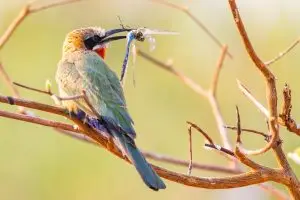
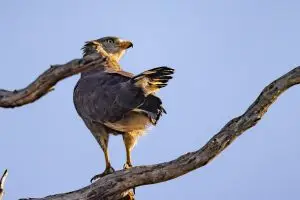
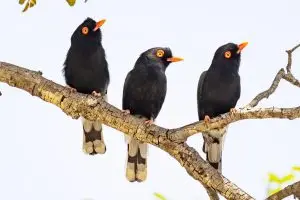
Early mornings in this area promise captivating encounters with various babblers, while during game drives, photographers eagerly hope to spot Black-bellied Bustards and even the elusive Yellow-throated Sandgrouse. On the boat trip, the African Fish Eagle is a common sight, but the Banded Snake Eagle remains a coveted target.
If you’ve experienced the Okavango Delta before, you’d find it hard to believe you’re anywhere other than this breathtaking natural wonder. The vast Linyanti floodplain showcases a picturesque African landscape adorned with termite mounds, grassy steppes, and small palm islands.
While animal density may not be as high as in other areas, the sense of wilderness here is unparalleled. Magnificent sunsets and distant lion roars enhance the feeling of being in the true heart of the wild.
Additionally, we have the opportunity to explore the history of David Livingstone by visiting a small museum, adding a touch of cultural richness to our nature-focused journey.
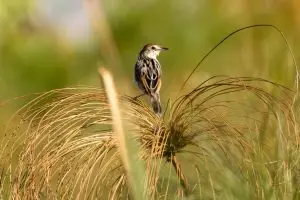
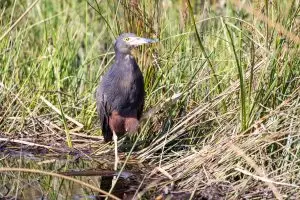
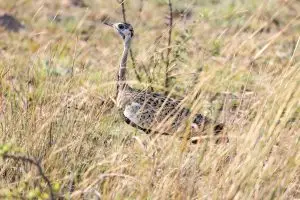
The Zambezi River, with its numerous divisions into long linear islands and tributaries, has seen its wildlife somewhat diminished due to the dense Lozi population in the area. However, on a boat trip, you’ll have fantastic photo opportunities to capture various turacos and water birds. These include the rare African Finfoot, Half-collared Kingfisher, Slaty Egret, Yellow-throated Leaflove, Eastern Nicator, Lesser Jacana, and a variety of bee-eaters.
Of particular note is the Southern Carmine Bee-eater, which breeds along the Zambezi’s banks from August onwards. Witnessing this ornithological marvel is a must-see experience.
US$ 50.- for visa and
US$ 30.- entrance fee to the falls (please bring separately)
Today we head for the Chobe River, the meeting-point of Namibia, Zambia, Botswana and Zimbabwe offers of the densest wildlife population to be found in Africa. Over many kilometres, the Chobe River floods numerous shallow islands every year. Life “booms” here, because there is food for everyone.
Numerous elephants line the banks and you can sometimes even see them swimming; wonderful for photographers. The flat islands are grazed by buffalo, impala, the rare grass antelope “Puku” and Waterbuck, and lying Nile crocodiles come suspiciously close on the shore.
Flocks of numerous Open-billed Stork, Whistling Duck, Spur-winged Goose and Pratincole pass overhead during the boat cruise. Slaty Egret show themselves on the shore and the Black Heron impresses with its remarkable way of fishing by forming its wings into a bell. Kingfisher photography guaranteed!
Our journey leads us to the Chobe River, a remarkable meeting point of Namibia, Zambia, Botswana, and Zimbabwe, offering one of Africa’s densest wildlife populations. Each year, the Chobe River floods numerous shallow islands, creating a thriving ecosystem with an abundance of food.
As we explore this region, we’ll encounter numerous elephants lining the riverbanks, and if we’re lucky, we might even witness them swimming—a fantastic opportunity for photographers. The flat islands are grazed by buffalo, impala, the rare grass antelope known as the “Puku,” and Waterbuck. Lying Nile crocodiles can be seen on the shores, occasionally coming quite close.
During our boat cruise, flocks of Open-billed Storks, Whistling Ducks, Spur-winged Geese, and Pratincoles will pass overhead. Slaty Egrets will grace us with their presence along the shore, and the remarkable Black Heron will impress with its unique fishing technique of forming its wings into a bell shape. Kingfisher enthusiasts can rest assured that there will be ample opportunities for photography.
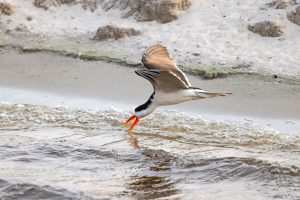
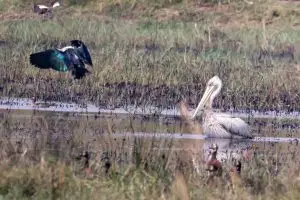
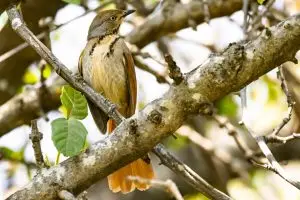
In 1855, David Livingstone described this area in awe: “The whole scene was extremely beautiful; the banks and islands dotted over the river are adorned with sylvan vegetation of great variety of colour and form…no one can imagine the beauty of the view from anything witnessed in England. It had never been seen before by European eyes; but scenes so lovely must have been gazed upon by angels in their flight.”
Here, an imposing bank at Victoria Falls is adorned with a dense forest of Cape figs, ferns, water pears, and majestic baobabs. Trumpeter Hornbills indulge in the lush figs and berries, while the vibrant Schalow’s Turaco, with its striking red wings, calls out in a thrilling manner.
Hidden away in the undergrowth, the Thrush Nightingale swims in secrecy, and the Bronze Mannikin flits among the ferns. With over 470 bird species recorded in this area, it stands as a hotspot for nature enthusiasts.
Additionally, Zimbabwe is home to many talented artists, and you’re likely to come across some remarkable artworks or engage with fascinating individuals during your visit.
Victoria Falls Airport offers connectivity to a diverse range of airports. For international travellers, we recommend considering connecting flights via Johannesburg, Cape Town, or Windhoek for a smooth and convenient journey.
| Participants per vehicle | per Person |
|---|---|
| 1 Person | $ 20'520.00 |
| 2 Persons | $ 13'443.00 |
| 3 Persons | $ 11'084.00 |
| 4 Persons | $ 9'905.00 |
| 5 Persons | $ 9'197.00 |
| 6 Persons | $ 8'725.00 |
| 7 Persons | $ 8'388.00 |
| Single Room Supplement | $ 1'388.00 |
In den Monaten Januar bis Mai sehr hoch und man sollte unbedingt Vorsorge treffen und sich vor Mückenstichen schützen. Die Monate Juni bis November sind kaum gefährlich, man sollte sich dennoch gut präventiv vor Mückenstichen schützen und/oder gar eine Prophylaxe einnehmen.
Yes, please only check that your passport is valid for at least 6 months after your return and that there are at least 4 free pages available.
The migratory birds arrive in the south again from September. October November would therefore be ideal to see e.g. the Carminspinte breeding without a great risk of malaria.
Migratory birds stay until March April, but from January to May the risk of malaria is quite high.
Please use Walvis Bay as arrival airport and Vic Falls as departure airport. In this case we start the journey in Walvis Bay or Swakopmund.
This Safari was last updated on 25. July 2024 @ 14:13.
Larks & Deserts, birding the southern Namibian Biomes & Deserts; Individual Ornithology & Nature Photography Tour in Southern Namibia
17 Days – This fantastic professionally guided trip to Uganda will show you the Shoebill, gorillas, chimpanzees, Nubian giraffes, hundreds of birds, and so much more. Good accommodations and full board included!
Warblers & Pachyderms, a Birding Safari with Natural History; Individual guided birding and nature photography tour from northern Namibia to Victoria Falls in the north-east.